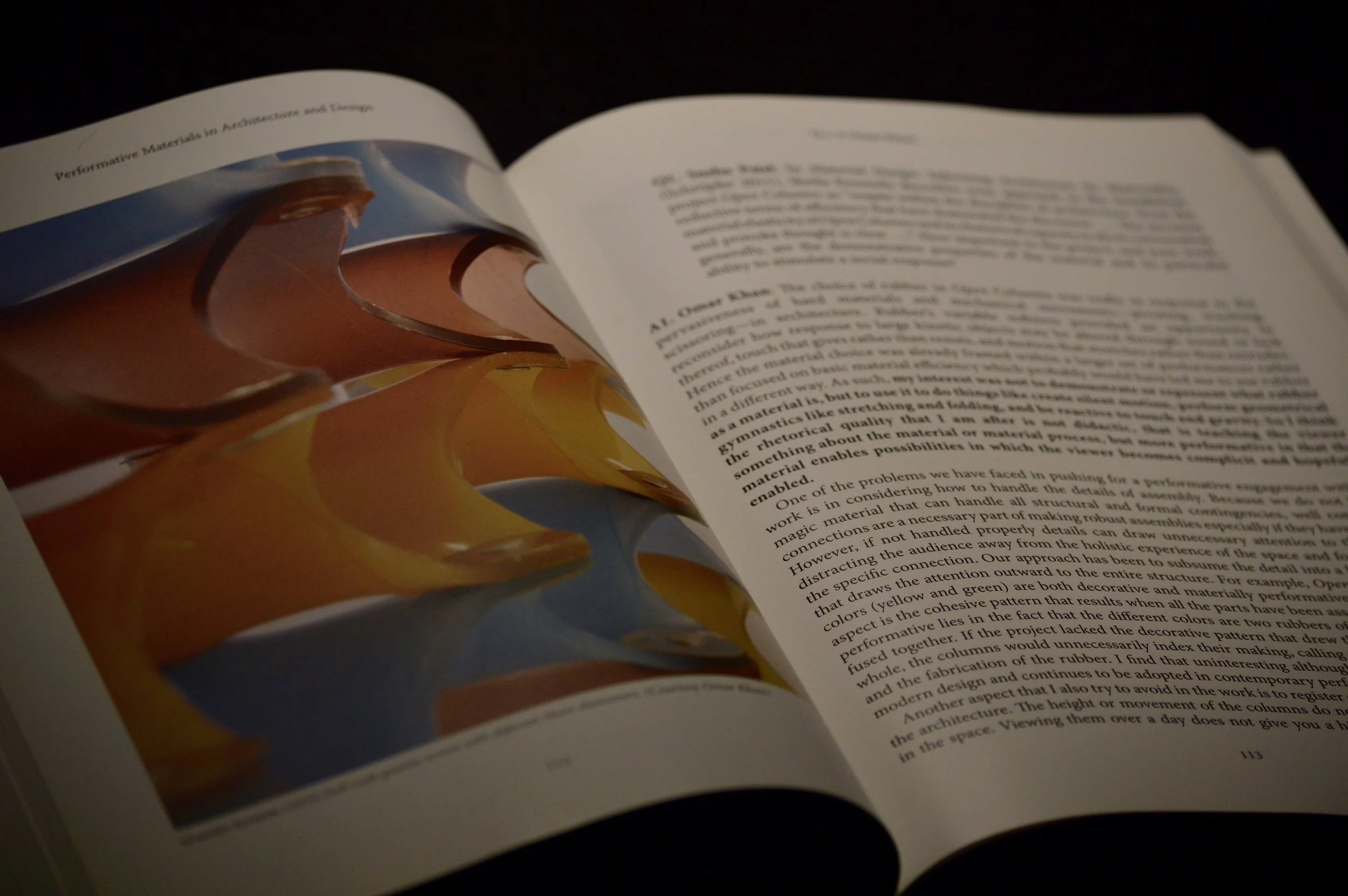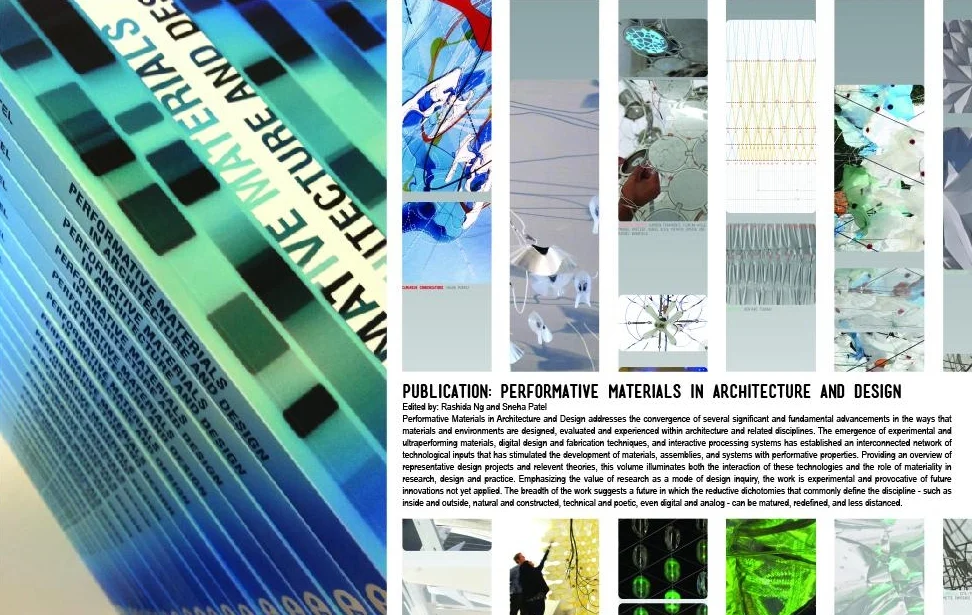The Role of Materiality in Research, Design, and Practice.
Performative Materials in Architecture and Design critically assesses the potential for an expanding role of material inquiry to emerge as a result of the confluence of advancements in both the physical and digital realms. Furthermore, it explores how the interrelationships between these technological advancements are poised to instigate increased innovation and material invention within the built environment. As architecture and related fields persist in explorations of the coincident potential of developments in materials science, digital fabrication, prototyping, and information technologies, we are simultaneously in the midst of rigorous evaluation of all of our technologies in response to the global directive for more ecologically sustainable paradigms. However, the convergence of these technologies foreshadows more than increased energy efficiencies and reduced material wastes; it also suggests the evolution of more deliberate and reciprocal relationships between materials and their proximate contexts. Philip Beesley remarks in the Foreword, “Immanent, dynamic, and open: the qualities offered by the voices in this volume are marked by a striking optimism about the expanded powers of performance-based architecture.” While contemporary discourse surrounding the built realm increasingly acknowledges that materials do not simply exist within dynamic environments, but more accurately are integral contributors to living ecological systems, the role of such materials can aptly be described as performative.
The book is available for purchase here.
Rashida Ng and Sneha Patel, Editors.
Performative Materials in Architecture and Design is published by Intellect, Ltd. and distributed by the University of Chicago Press.
Acknowledgements: Performative Materials in Architecture and Design was supported by Temple University and the Tyler School of Art.









